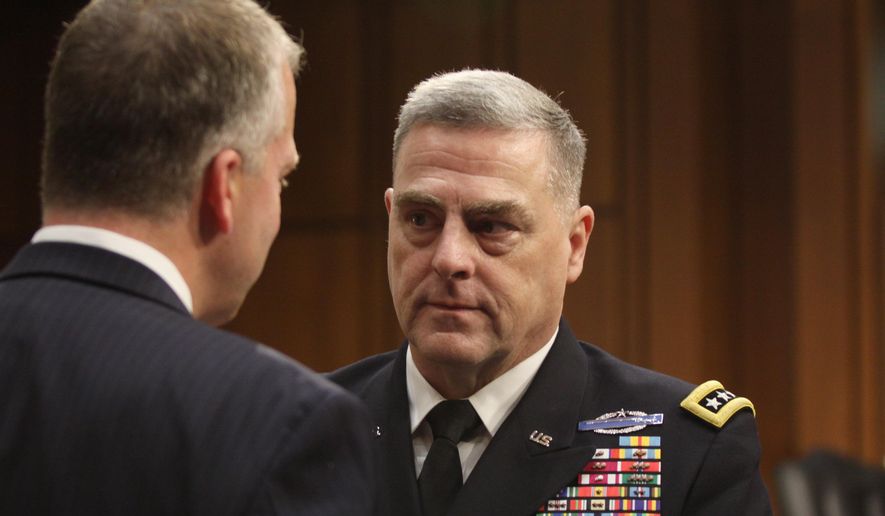The Army’s readiness problems after over a decade of continuous combat in Afghanistan and Iraq cannot simply be solved by recruiting more soldiers into its ranks, the service’s top officer said Monday.
Army Chief of Staff Gen. Mark Milley admitted the service had “mortgaged” its future, in terms of troop levels and capabilities, to fight the wars in Afghanistan and Iraq.
But asked about a proposal by Republican nominee Donald Trump to greatly boost the Army’s manpower, Gen. Milley told the annual Association of the U.S. Army conference that reconstituting the Army, along with the rest of the service branches, is “not about numbers [alone]. It is about capabilities.”
“Lots of things just get lost in that [kind of] conversation,” Army Secretary Eric Fanning said during the same briefing Monday.
Saying the U.S. military has deteriorated badly under President Obama and Democratic rival Hillary Clinton, Mr. Trump doubled down this week on his campaign pledge to revamp the country’s armed forces, including fielding a 540,000-man Army under his administration.
Mr. Trump once again slammed what he called the “depleted” nature of U.S. forces during a campaign stop in Northern Virginia, placing the blame squarely at the feet of the Obama administration and Mrs. Clinton.
“We will build our military forces to a level that will be, I believe, stronger than ever before if I become president of the United States,” he told supporters at the town hall event, hosted by the Retired American Warrior PAC in Northern Virginia.
“We are the greatest people on Earth, but they are depleted,” Mr. Trump added. “You see where the fighter jets are so old that they can’t parts anymore, they have to go to airplane graveyards and museum to get parts for our fighter jets that they are currently using.”
The Republican candidate has touted a plan to restore force levels across the services, including adding 90,000 new soldiers, backed by a 350-ship Navy and an Air Force of 1,200 fighters.
Trump campaign’s promise to grow the Army is simply unrealistic, Nora Bensahel, a defense and national security expert at the Atlantic Council, said.
“There is no way to get the Army that trade-off,” she said during a symposium there in September, referring to the massive budget cuts needed to support plans to boost the service’s numbers higher than the current 450,000 troops.
Mrs. Clinton has yet to go on record on what total force numbers she would seek, even while hammering away at Mr. Trump’s lack of experience in national security and foreign affairs.
Gen. Milley declined to comment on the feasibility of the Trump campaign’s plan or whether Army leaders would back such a course of action.
But specific troop numbers, military experts say, are only a part of the necessary factors that go into preparing a military for war.
That is particularly the case for the Army, which “faces a fundamental change in the character of ground warfare” from the counterinsurgency wars of Iraq and Afghanistan to the threats posed by larger traditional powers such as Russia and China, according to Gen. Milley.
That said, Army leaders have conducted “all kinds of studies [and] do a lot of analysis” on what the right troop number for the Army should be going forward, Gen. Milley said.
• Seth McLaughlin contributed to this report.
• Carlo Muñoz can be reached at cmunoz@washingtontimes.com.




Please read our comment policy before commenting.